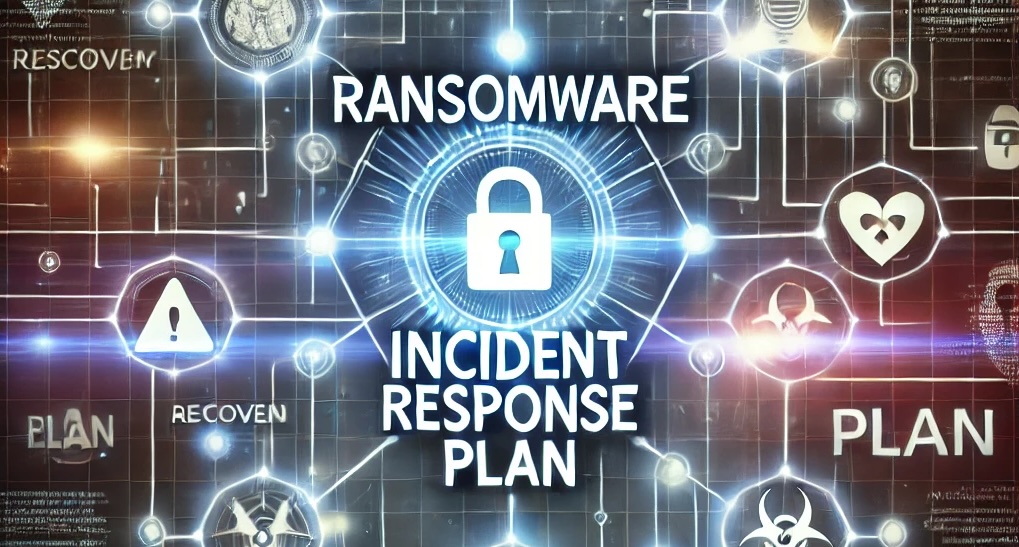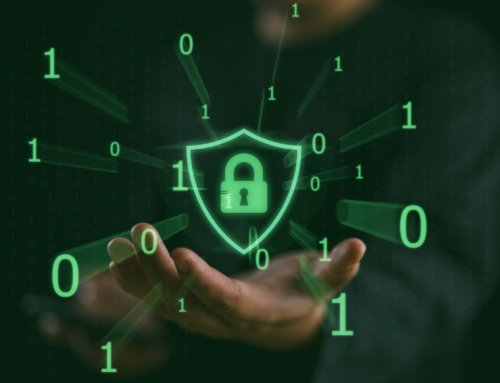How to Implement a Ransomware Incident Response Plan
Understanding the Threat of Ransomware: Establishing the Need for a Response Plan
Implementing a ransomware incident response plan is no longer optional; it’s a necessity for any organization seeking to protect its digital assets. Ransomware, a type of malware that encrypts data and demands a ransom for its release, has evolved to become one of the most significant threats to our cyber infrastructure. The need to prepare and arm our teams against this growing threat is paramount. At Alvaka, we understand that the key to mitigating this risk lies in proactive prevention, careful planning, and strategic response.
Key Elements to Consider When Implementing a Ransomware Incident Response Plan
When developing a plan to counter a ransomware attack, it’s crucial to identify the roles and responsibilities within the organization. This framework enables us to act swiftly and efficiently when a threat is detected. A sound plan involves clear communication strategies, regular employee training, and a thorough understanding of the organization’s network architecture. Alvaka ensures that these elements are not only considered but seamlessly integrated into your ransomware defense strategy.
The Role of IT Management and Advanced Network Services in Ransomware Prevention
In our approach to curtail the severe impact of ransomware, we underscore the importance of IT management and advanced network services. IT management is the backbone of any cyber defense strategy, providing oversight and ensuring adherence to best practices. In concert with IT management, advanced network services play a pivotal role in ransomware prevention. These services, including network monitoring, firewall management, and intrusion detection systems, are employed by Alvaka to detect and respond to threats before they escalate into full-scale ransomware attacks. By implementing a ransomware incident response plan that leverages these services, we bolster our resilience against cyber adversaries.
Preparing Your Team: Roles and Communication in Implementing a Ransomware Incident Response Plan
In the fight against ransomware, the strength of our defense is only as good as the preparedness of our team. We recognize that implementing a ransomware incident response plan requires clear roles and robust communication strategies. Our approach is to ensure that every member understands their responsibilities and the collective goal of minimizing the impact of a breach.
Technical Measures: Advanced Network Services to Mitigate Ransomware Risks
At the technical forefront of our incident response plan are the advanced network services designed to detect, prevent, and respond to ransomware threats. We incorporate network monitoring tools that track unusual activity that could indicate a breach. Our firewall configurations are customized to filter out potential threats, while intrusion detection systems remain on high alert for any signs of ransomware penetration.
Furthermore, we emphasize the importance of regular software updates and patch management to protect against vulnerabilities that could be exploited by attackers. The implementation of endpoint protection offers a more granular level of defense, safeguarding individual devices that may serve as entry points for ransomware.
Testing and Refinement: Simulations and Drills for an Effective Ransomware Response
An effective ransomware incident response plan is not set in stone; it requires constant testing and refinement. In our commitment to safeguarding your digital assets, we regularly conduct simulations and drills that mirror real-world scenarios. These exercises enable us to identify any gaps in our response plan and adjust our strategies accordingly.
- Analyzing the effectiveness of communication channels during an incident
- Evaluating the speed and efficiency of our isolation procedures
- Assessing decision-making processes under pressure
- Reviewing the coordination between different teams and stakeholders
- Measuring data recovery times and the integrity of backup solutions
- Updating documentation and protocols based on lessons learned
Our proactive approach ensures that, when faced with an actual ransomware attack, we can manage the situation with agility and precision, reducing downtime and financial impact.
Did you know? An effective Ransomware Incident Response Plan can reduce recovery costs by up to 70%, emphasizing the importance of proactive IT management and network defense strategies.
Evaluating Incident Response: Learning from Ransomware Simulations and Attacks
At Alvaka, we recognize that any robust security posture is incomplete without thorough evaluation and learning. It’s through meticulous analysis of ransomware simulations and real-world attacks that our team sharpens its ability to counter future threats. Our post-incident reviews focus on identifying response effectiveness, team coordination, and any gaps in our defense strategies. This introspective approach ensures that our clients benefit from strategies shaped by experience, allowing for continuous improvement in our incident response protocols, effectively reinforcing their trust in our commitment to security resilience.
The Continuous Evolution of Ransomware Defense: Staying Ahead with IT Management
Ransomware does not stand still, and neither do we. In the ever-evolving landscape of cyber threats, implementing a ransomware incident response plan is just the beginning. Our proactive stance ensures that we are always on the forefront, leveraging the latest in IT management to protect and serve our client’s interests. Through ongoing training, adoption of advanced defense mechanisms, and staying abreast of the cybercrime zeitgeist, we cultivate an environment of constant vigilance and readiness, assuaging the fears associated with ransomware and preemptively mitigating potential vulnerabilities.
Implementing a Ransomware Incident Response Plan: Key Takeaways for IT Security
Implementing a ransomware incident response plan is a critical step in establishing a fortified IT security posture. Here at Alvaka, we stress the importance of a multi-faceted approach that includes preparation, prevention, and precision in response. Our plans are not just documents but living frameworks that adjust to new threats and integrate lessons learned from every simulation and real-world occurrence. It is through this adaptive strategy that we empower businesses to not only recover from ransomware with solutions like ransomware recovery, but also to build a resilience that deters future attacks. We take pride in the trust our clients place in us, and we are dedicated to safeguarding their operations with unwavering vigilance and advanced technological solutions.
FAQ
What is a Ransomware Incident Response Plan? ▼
A Ransomware Incident Response Plan is a strategic framework designed by our IT management team. It outlines the procedures to follow before, during, and after a ransomware attack, with the goal of minimizing damage, containing the outbreak, and ensuring a swift recovery of operations.
Why do we need a Ransomware Response Plan? ▼
We need a Ransomware Response Plan because ransomware attacks are not just threats—they are real, happening regularly, and can cause devastating losses for unprepared organizations. Consequently, having an effective response plan ensures we can quickly respond and mitigate the impact of such attacks on our operations and data.
How often should we test our Ransomware Incident Response Plan? ▼
Our Ransomware Incident Response Plan should be tested regularly—at least annually or whenever there are significant changes to our IT infrastructure or threat landscape. Nonetheless, more frequent testing, such as bi-annual or quarterly drills, can help keep our team prepared and response mechanisms up to date.
Who should be part of the incident response team? ▼
The incident response team should comprise individuals from our IT department, including network security personnel, system administrators, and any relevant third-party advanced network service providers. Additionally, it’s important to include representatives from legal, human resources, and public relations to address non-technical implications of ransomware incidents.
What role do advanced network services play in preventing ransomware? ▼
Advanced network services play a crucial role in preventing ransomware. They encompass advanced threat detection, network segmentation, and traffic analysis, which all assist in identifying and isolating malicious activities before they can spread and cause significant damage to our network.
Can ransomware be prevented? ▼
While it is nearly impossible to prevent all ransomware attacks due to the constantly evolving threat landscape, employing a robust set of technical measures like firewall management, regular software updates, and employee training can significantly reduce our susceptibility to attacks.
What is the importance of communication during a ransomware attack? ▼
Effective communication is vital during a ransomware attack because it ensures that all team members are aware of their roles and responsibilities. Moreover, it helps in the dissemination of information quickly to stakeholders, aiding in a swift and coordinated response to mitigate the attack’s impact.
What should we do immediately after detecting a ransomware infection? ▼
Immediately after detecting a ransomware infection, we should activate our Ransomware Incident Response Plan. This involves isolation of affected systems, securing backups, initiating a forensic investigation, and notifying all necessary internal and external stakeholders, including law enforcement if necessary.
How can we evaluate the effectiveness of our response after a ransomware incident? ▼
We can evaluate the effectiveness of our response to a ransomware incident by reviewing the sequence of actions taken, analyzing how closely we adhered to our response plan, and identifying areas for improvement. Additionally, conducting a post-incident review with feedback from all participants plays a critical role in refining our response plan.
How does IT management contribute to ransomware defense? ▼
Our IT management contributes to ransomware defense by ensuring that best practices are followed for network security, such as implementing strong firewalls, maintaining updated software, managing access controls, and overseeing the overall security posture of our organization. Furthermore, they are responsible for the continuous monitoring of our systems and the ongoing education of our staff regarding cybersecurity.








 Smoke testing is a term used to describe the testing process for servers after patches are applied.
Smoke testing is a term used to describe the testing process for servers after patches are applied.  This is a basic cost calculator for you to compute your typical monthly cost for patching your servers, PCs, laptops, tablets and associated application software. It also forms the basis for you to begin calculating your Return on Investment for software patching, or for comparison with alternatives to the manual process of patching operating systems and application software—such as Patch Management as a Service, also known as Vulnerability Management as a Service.
This is a basic cost calculator for you to compute your typical monthly cost for patching your servers, PCs, laptops, tablets and associated application software. It also forms the basis for you to begin calculating your Return on Investment for software patching, or for comparison with alternatives to the manual process of patching operating systems and application software—such as Patch Management as a Service, also known as Vulnerability Management as a Service.